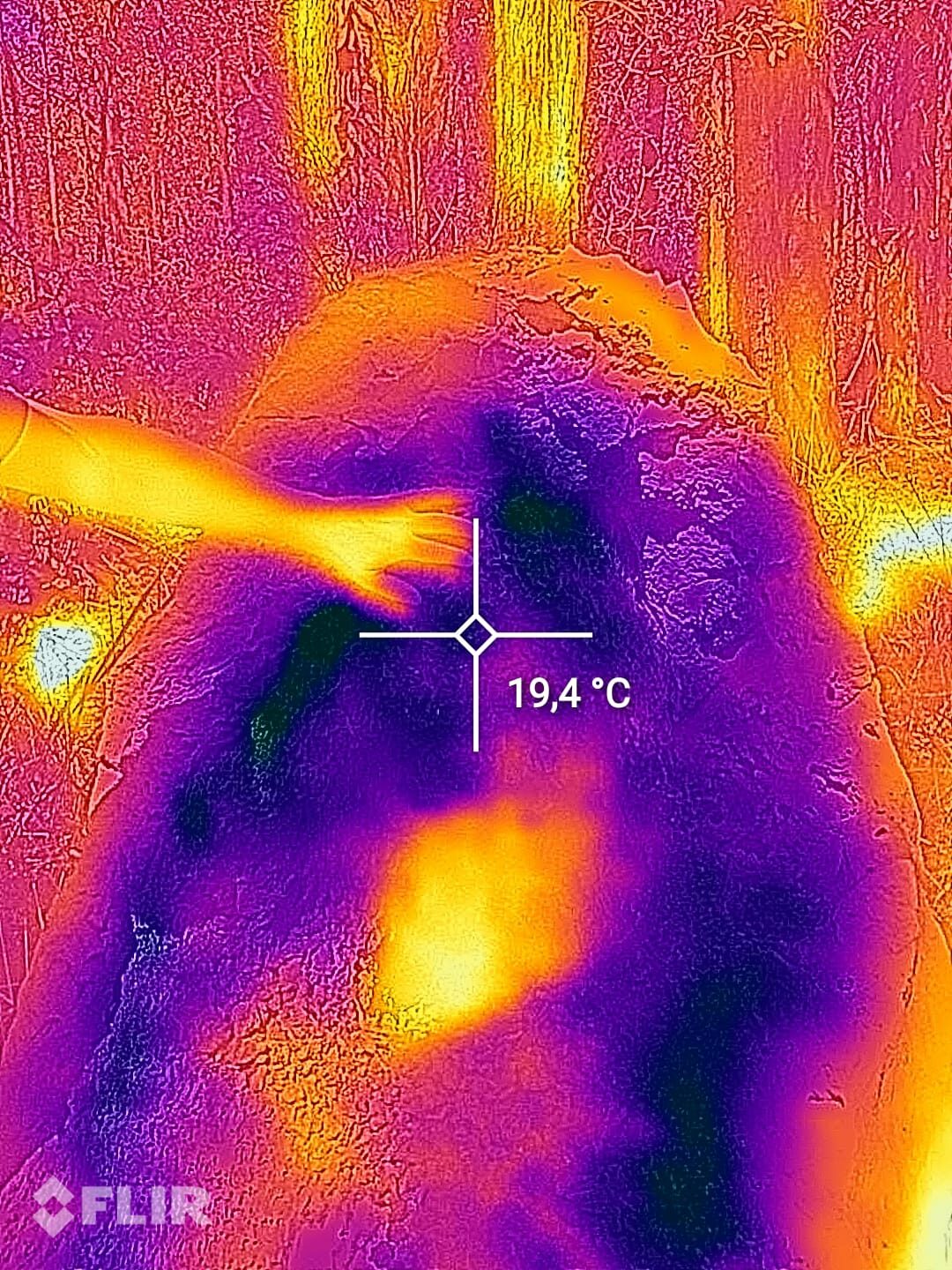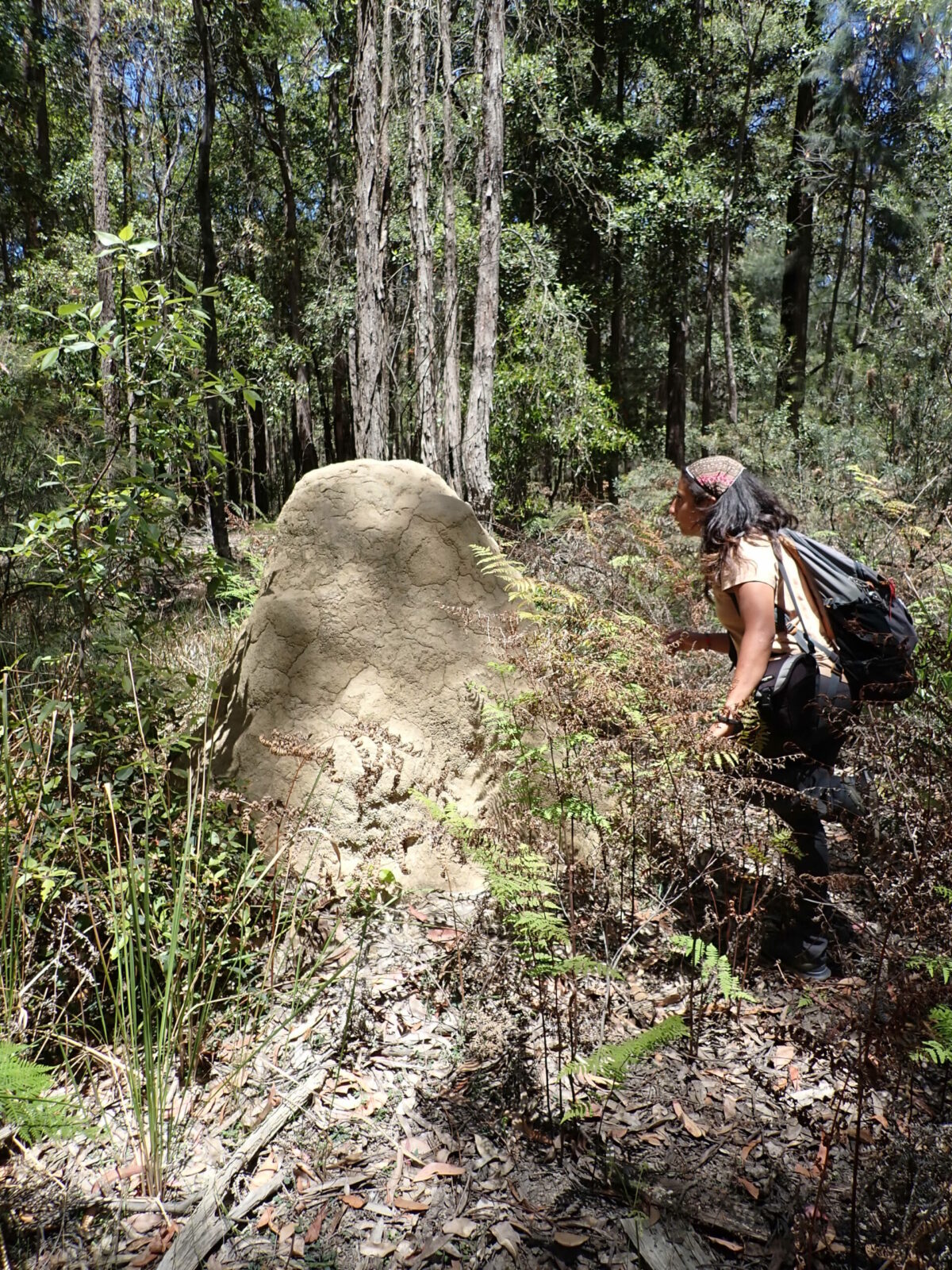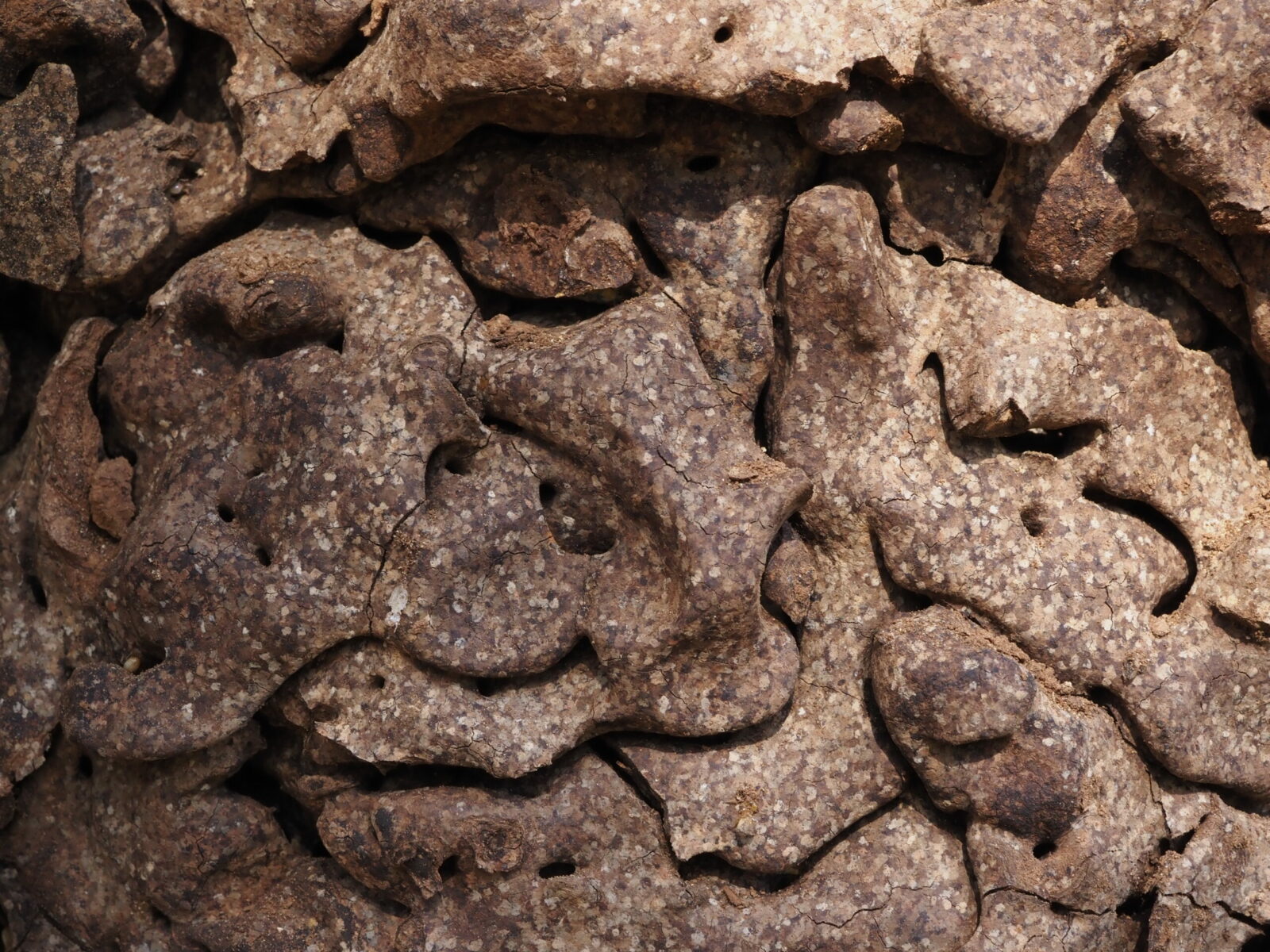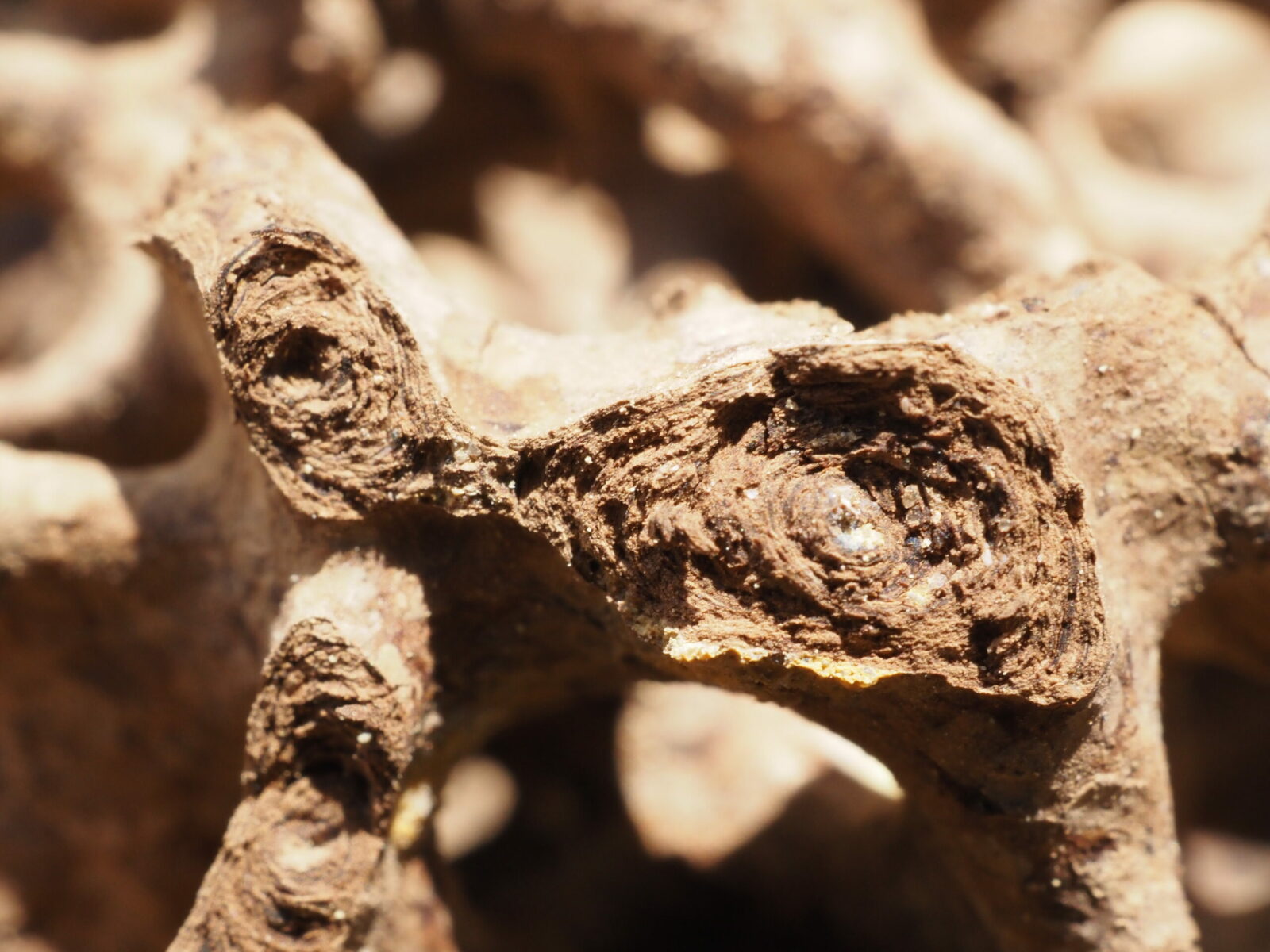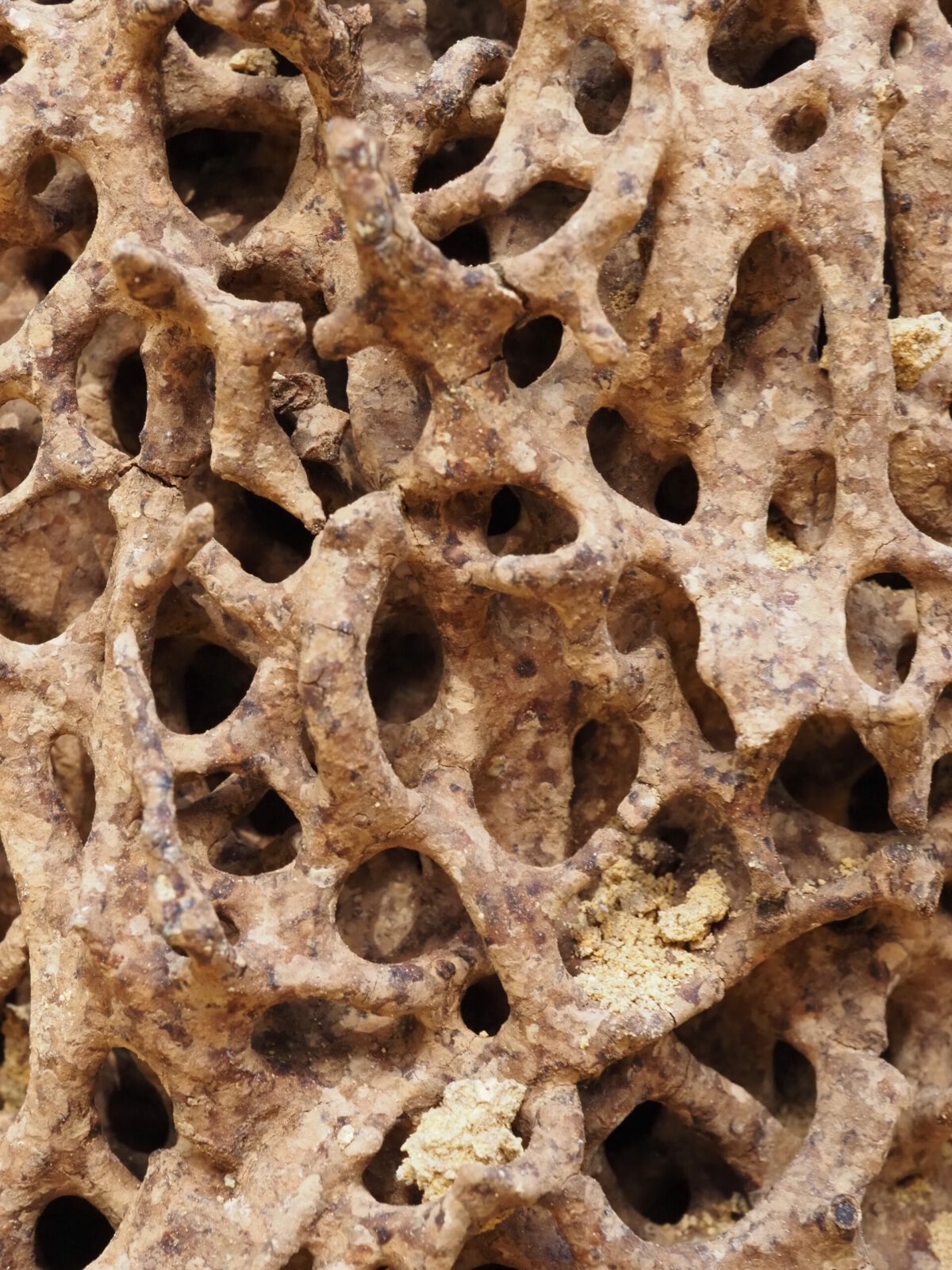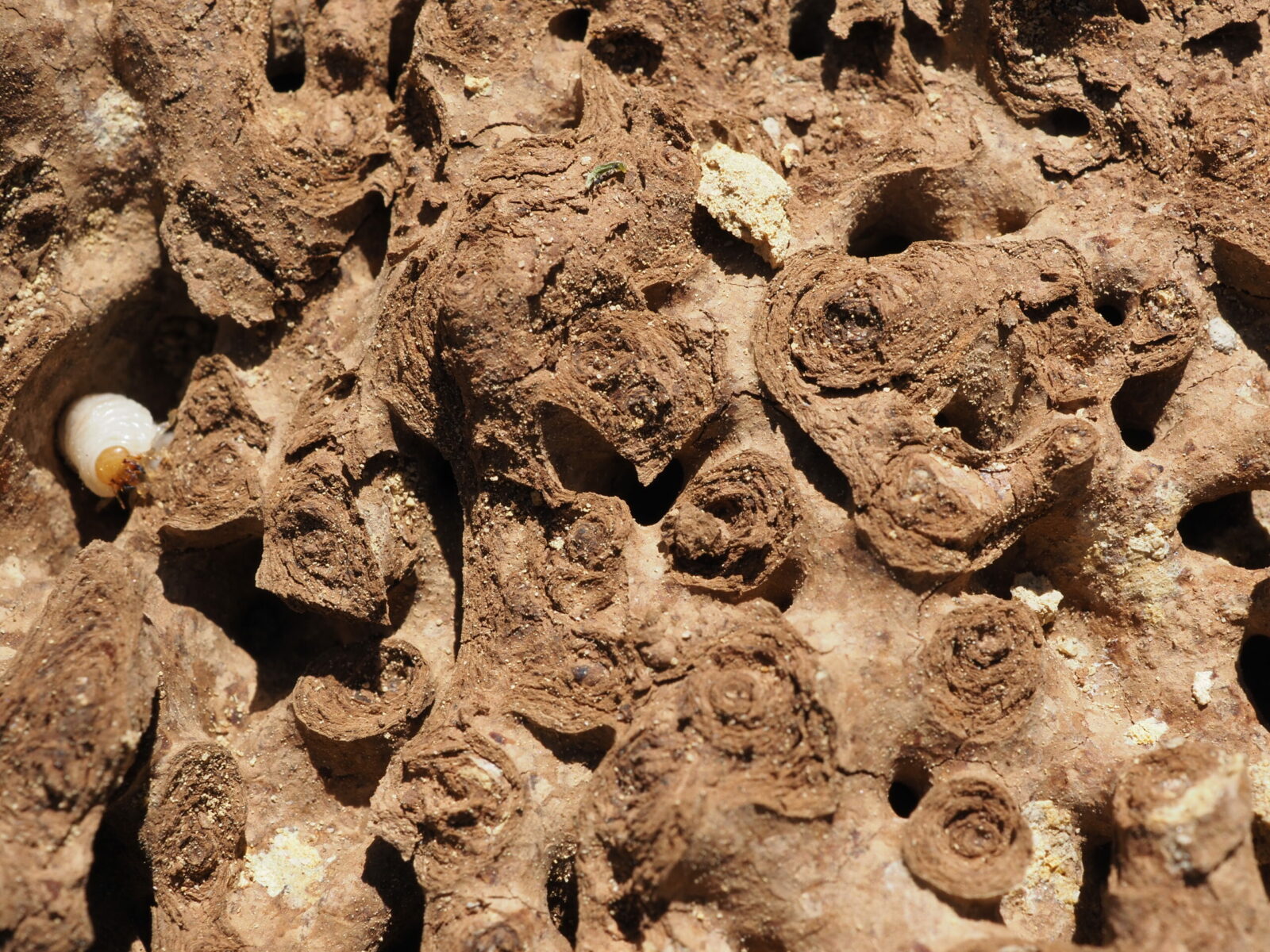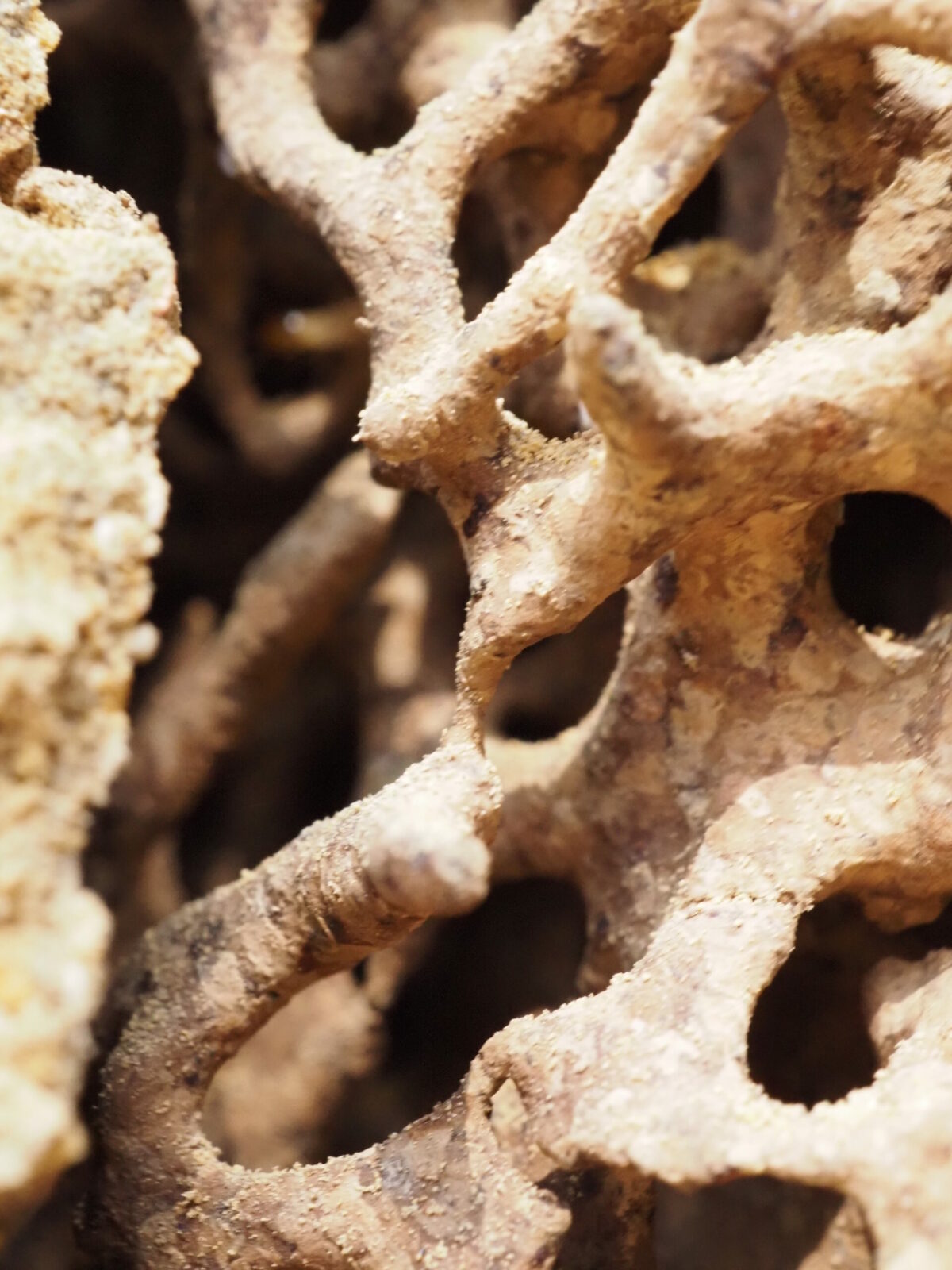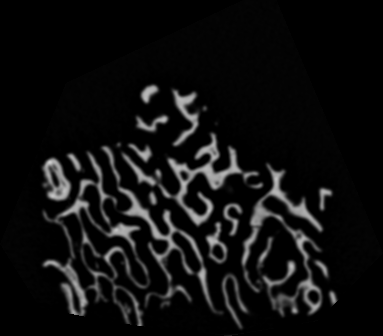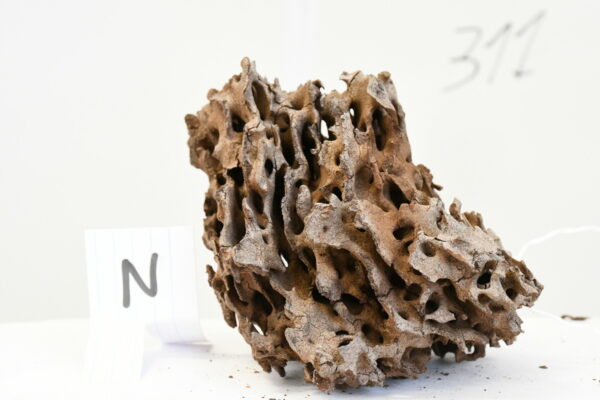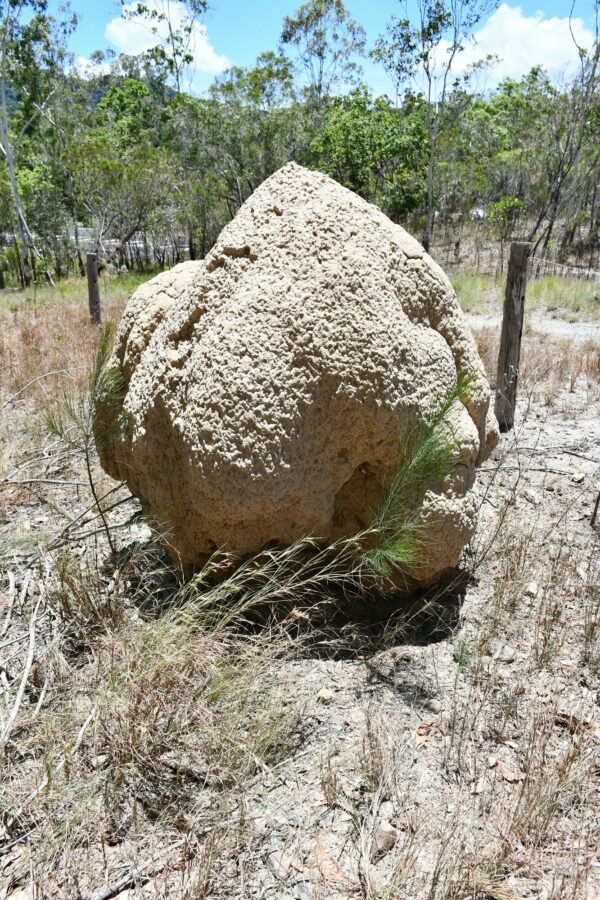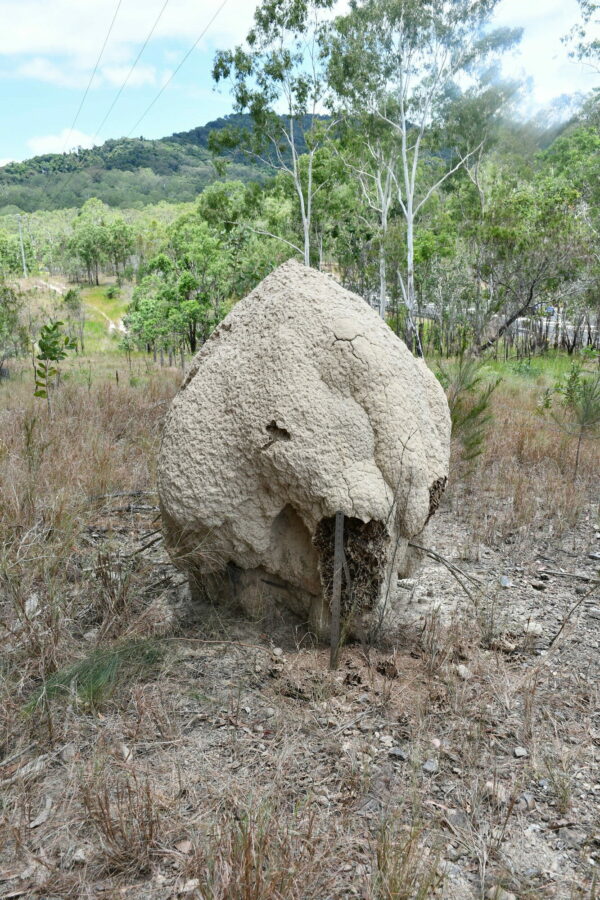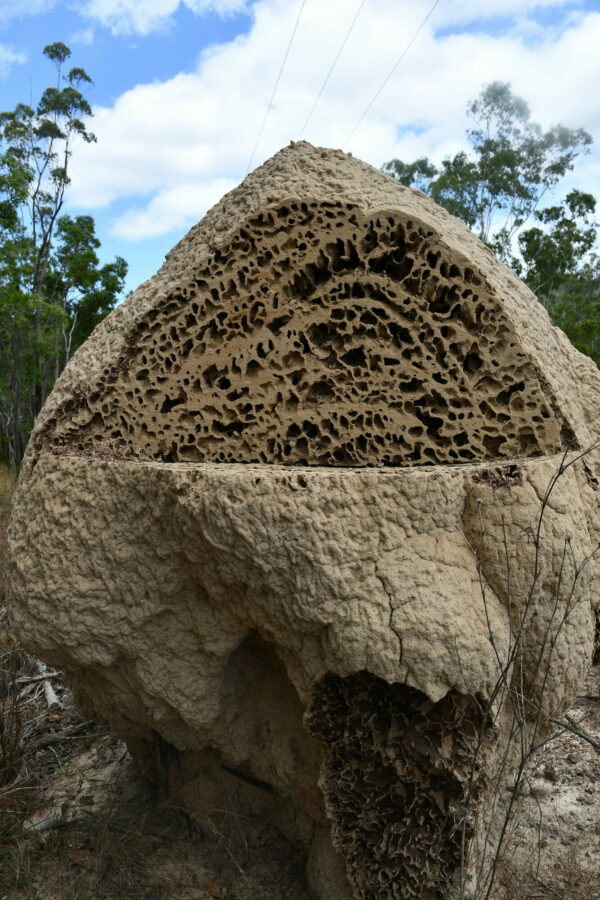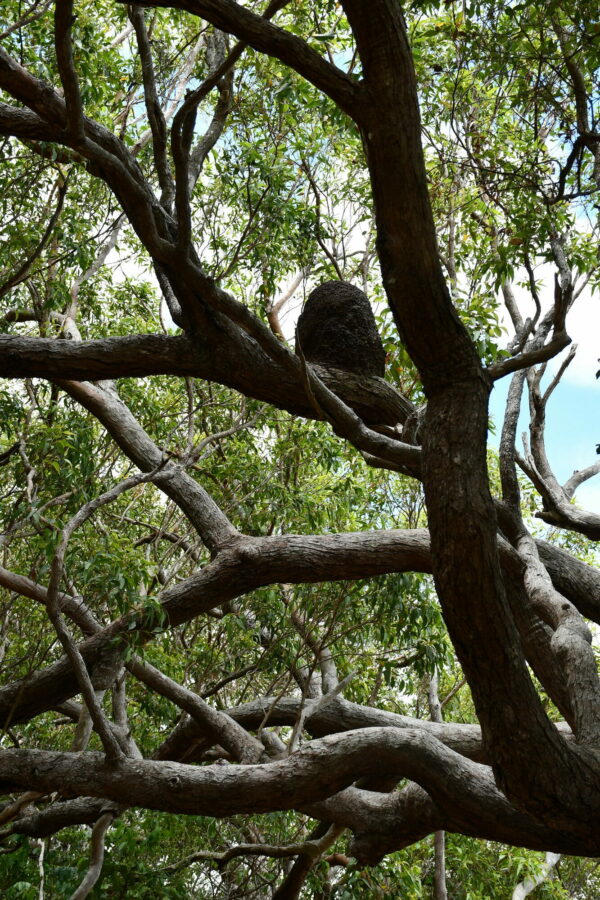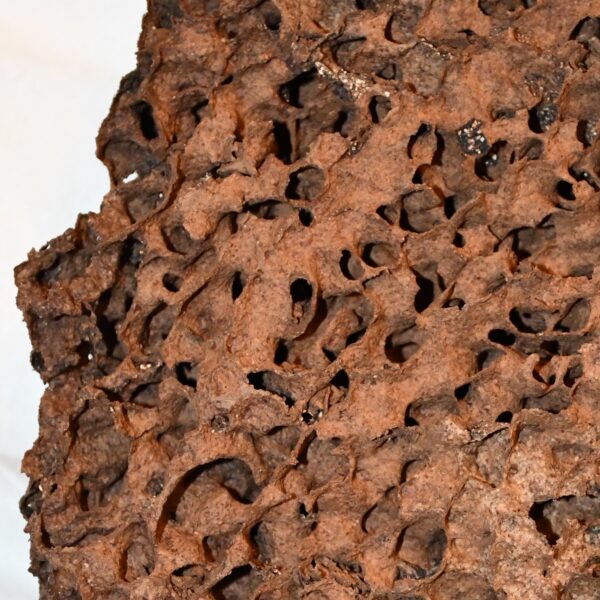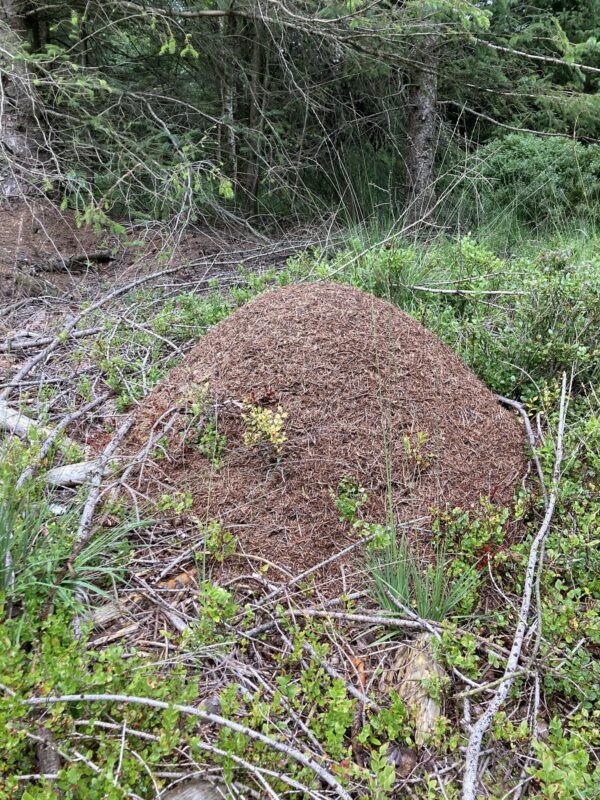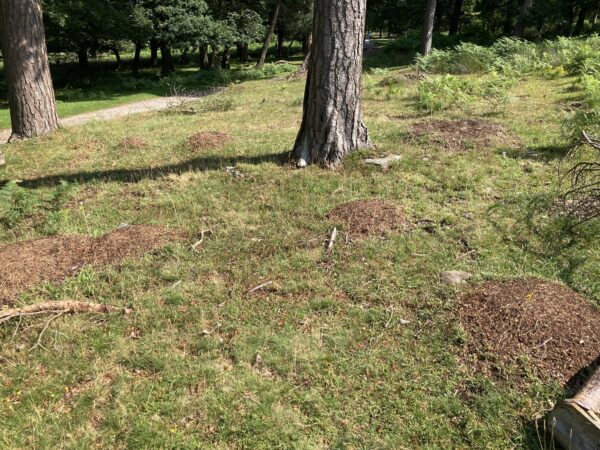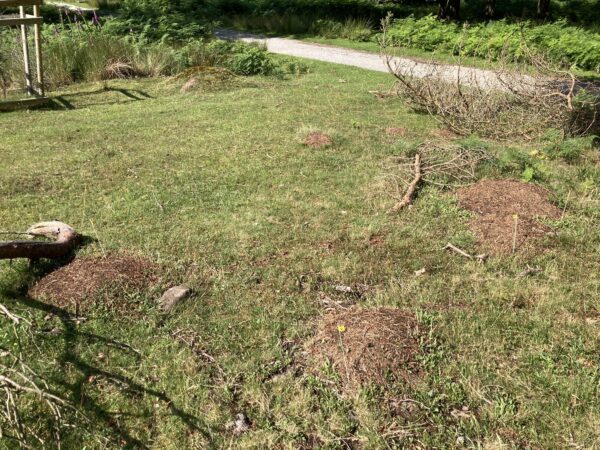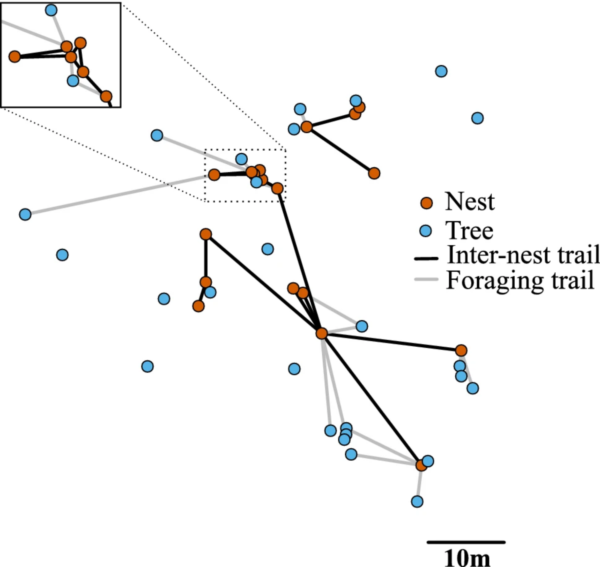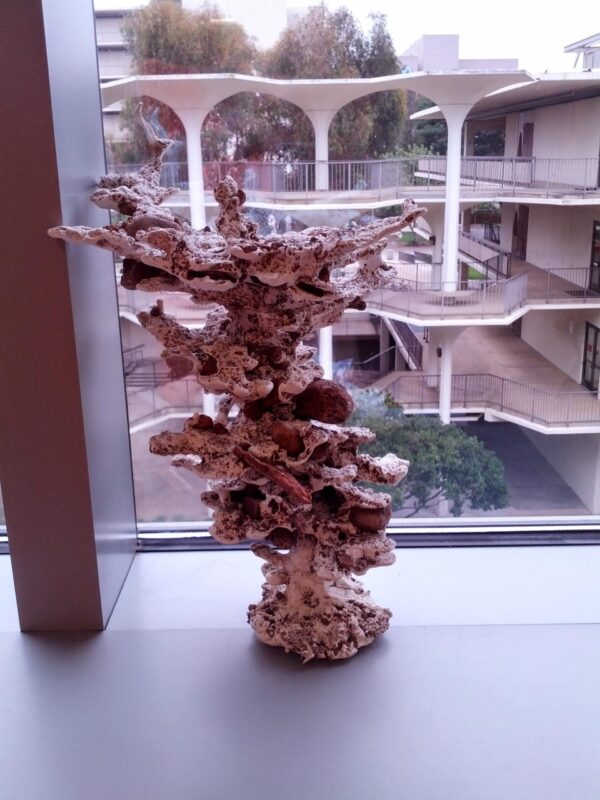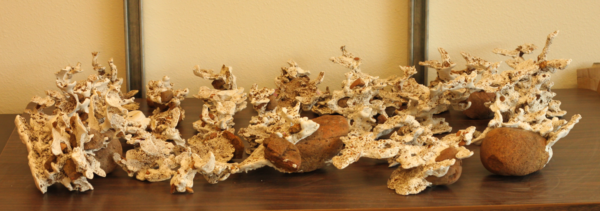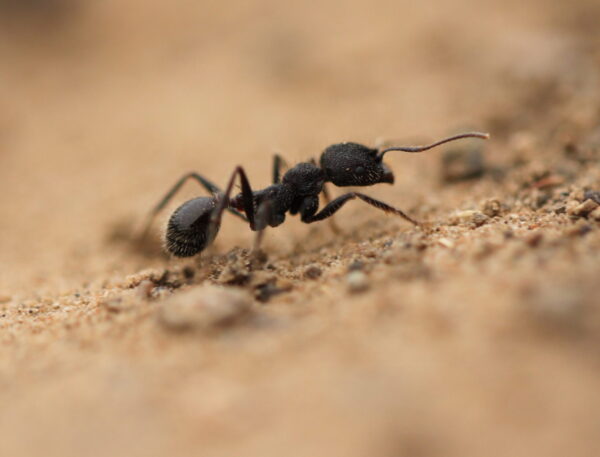Termites often impress us with their ability to build large and complex mounds. This ability, however, is typically restricted to the single family Termitidae, while the nests of all other termite families are often very simple. The termite Coptotermes lacteus represents a rare exception, as their colonies have the ability to build very large and complex mounds.
This mound, found in the region of Olney State Forest in New South Wales, Australia, was massive. The excavation of the mound allowed us to clearly observe the different structures that are typically found in Coptotermes lacteus mounds, starting from the external crust, made of very thick and hard sandy material, and then reaching the internal core of the nest, which comprises two main types of different structures: a scaffold of interconnected pillars, and a structure with the appearance of solidified material that was semi-fluid at the time of deposition. The nest was warm inside, with a temperature several degrees higher than the surrounding environment.
The pictures of these different structures show quite clearly that the solidified, initially semi-fluid material is deposited on top of the other scaffold structure. This material would be used by termites as stored food, possibly undergoing some chemical transformations while it is stored in the mound.
During the excavation, we only saw very few individuals, as probably the colony had retreated to inner parts of the mound and to underground galleries because of our disturbance.

